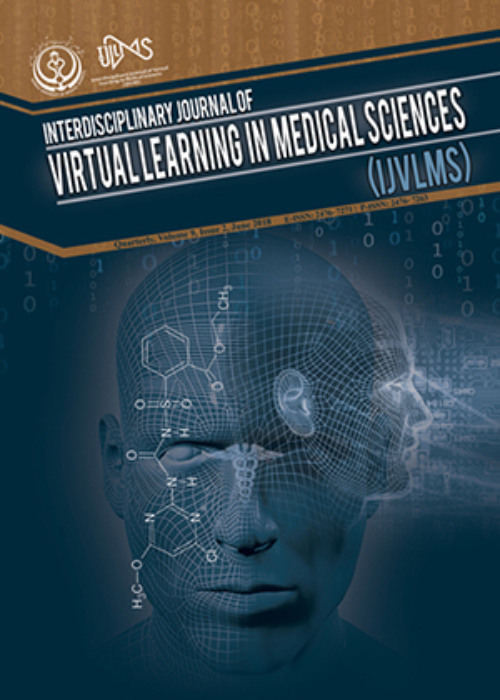Analysis of Strengths, Weaknesses, Opportunities and Threats of E-learning from the Perspective of Experts in the Period of COVID-19 Pandemic
Author(s):
Article Type:
Research/Original Article (دارای رتبه معتبر)
Abstract:
Background
Today, e-learning has become one of the basic components of education process, especially in higher education. Institutions and universities employ e-learning extensively in their educational operations. In light of this, the goal of the current research was to determine the advantages, disadvantages, possibilities, and dangers associated with e-learning in the Iranian higher education system.Method
The present research is applied in terms of purpose and with a qualitatively exploratory approach. The participants of present study were experts in the field of e-learning in public universities of the Ministry of Science, Research and Technology in 2021.Using purposive sampling and snowball sampling methods, 16 e-learning experts were selected as the participants. Semi-structured interviews were used to collect data and thematic analysis was employed to analyze the obtained data. Results
After analyzing the obtained data from the interview, the total number of 116 free codes were extracted from interviews content was 116 codes, which were classified in 18 concepts and finally were identified strengths (Use of office automation in universities, Establishment of information and communication technology centers in universities, Development of e-learning in universities, Familiarity of faculty members and students with virtual environments, The place of e-learning in upstream documents and university perspectives), weaknesses (Lack of proper infrastructure, equipment and facilities for e-learning, Lack of specialized manpower, Lack of formal regulations for e-learning in the field of higher education, Insufficient knowledge about e-learning), threats (Threats related to cost, facilities and time, Management threats, Threats to change the nature of the university, Threats related to interactions) and training opportunities (Increas access to e-learning, Expanding international and intercultural interactions, Environmental benefits, Providing economic opportunities , Development of educational justice) of e-learning in Iranian higher education system. Conclusion
Considering the research findings, to develop educational justice and the possibility of more population access to the University of the Student community, reviewing existing approaches and educational methods and using e-learning as a new educational strategy for higher education system are necessaryKeywords:
Language:
English
Published:
Interdisciplinary Journal of Virtual Learning in Medical Sciences, Volume:13 Issue: 2, Jun 2022
Pages:
127 to 136
magiran.com/p2455900
دانلود و مطالعه متن این مقاله با یکی از روشهای زیر امکان پذیر است:
اشتراک شخصی
با عضویت و پرداخت آنلاین حق اشتراک یکساله به مبلغ 1,390,000ريال میتوانید 70 عنوان مطلب دانلود کنید!
اشتراک سازمانی
به کتابخانه دانشگاه یا محل کار خود پیشنهاد کنید تا اشتراک سازمانی این پایگاه را برای دسترسی نامحدود همه کاربران به متن مطالب تهیه نمایند!
توجه!
- حق عضویت دریافتی صرف حمایت از نشریات عضو و نگهداری، تکمیل و توسعه مگیران میشود.
- پرداخت حق اشتراک و دانلود مقالات اجازه بازنشر آن در سایر رسانههای چاپی و دیجیتال را به کاربر نمیدهد.
In order to view content subscription is required
Personal subscription
Subscribe magiran.com for 70 € euros via PayPal and download 70 articles during a year.
Organization subscription
Please contact us to subscribe your university or library for unlimited access!



